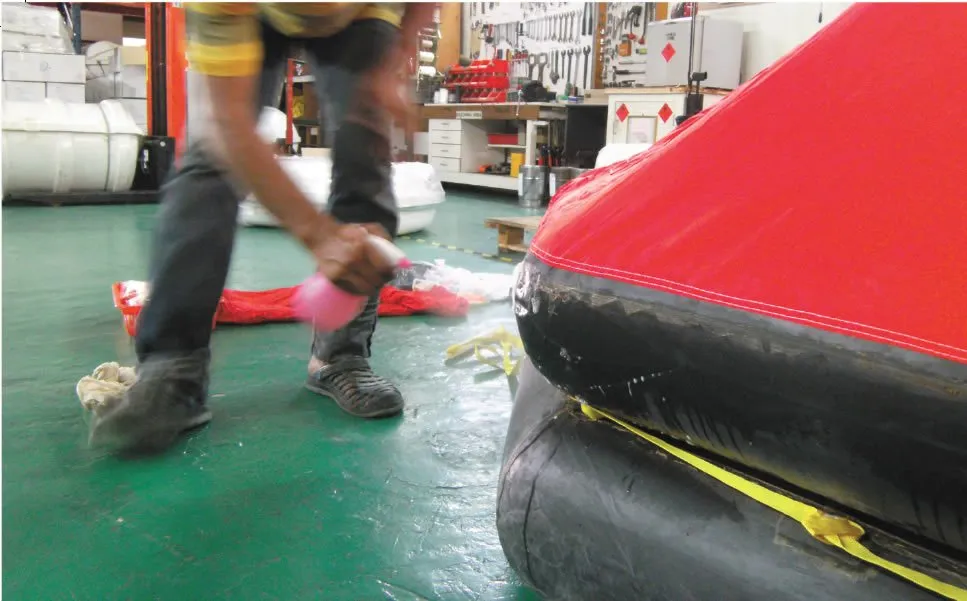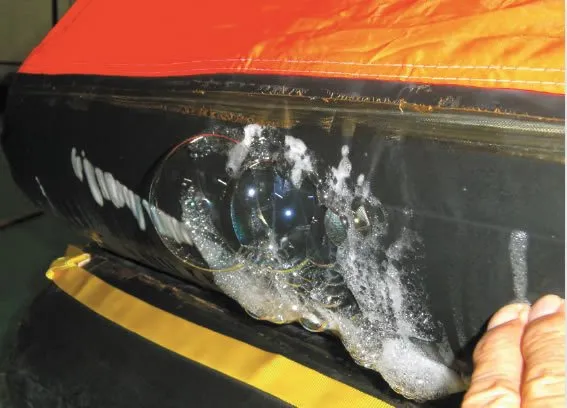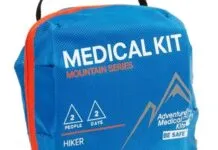Photos by Patrick Childress


Spring is when many sailors have to bite the bullet and have their liferaft inspected, an expense that costs 10 to 30 percent of the price they paid for the raft-or more.
In the U.S., there is no inspection requirement for liferafts on recreational boats. Inspection guidelines are set by the manufacturer. In Europe and other parts the world, rafts for recreational boats that sail offshore are supposed to meet ISO Standard 9650-1. This standard allows for an inspection interval of up to three years, but manufacturers often specify shorter intervals, especially for boats that spend most of their time in the tropics.
The experience of Rich Crowell and Jan Schwab, whose 14-year-old, six-man, valise-stored Avon liferaft is pictured above, reminds us of the importance of following the manufacturers inspection schedule, however onerous it might seem.
The pictures were taken in Malaysia, less than four years after the rafts previous full inspection in New Zealand. The hand-glued neoprene raft had a 12-year-old warranty when it was bought new in 2004. The raft manual called for an annual inspection. The owners, like many cruisers, waited nearly five years between inspections. It was condemned, and the failure to follow inspection schedule, as well as the rafts age, voided any warranty coverage.
The couples experience raises an important point about purchasing a liferaft. When respected brands are passed between investment groups, and production is moved overseas to save costs, quality control and service support can suffer. When it comes to liferafts, service support is just as important as the raft itself.
A pioneer in the world of inflatable boats, Avon was acquired by French competitor Zodiac in 1998. Zodiac stopped making Avon liferafts in 2004, and then scaled back to two Zodiac brand life rafts. Emerging from bankruptcy in 2015, the company, now known as Zodiac Nautic, introduced two new liferafts this year.
To complicate things, there is another Zodiac liferaft on the market. During the economic downturn, British-based Survivetec acquired the Zodiac brand for commercial (SOLAS) life rafts, sold under the SurvivetechZodiac label. The company also stepped up its acquisition of several other liferaft brands. The companies now under the Survivetecs umbrella include Survival Offshore Systems (Australia), Crewsaver (U.K.), DSB (Germany), RFD-Beaufort (United Kingdom), and Revere Supply (U.S.).
A State of Flux
With the world of inflatable boats in such a state of flux, it is important to know what you are buying, from whom, and the quality of service support you will get. Well-established brands that also serve the commercial market have worldwide service support, but not all stations are trained to inspect and service recreational rafts-one reason why we recommend a SOLAS raft for worldcruisers.
The Avon liferaft pictured above is made of the elastomer chloroprene rubber (CR), also known as neoprene. The other elastomer common in rubber boats is chlorosulfonated polyethylene (CSM), known by the brand-name Hypalon. It appears that the materials coating has failed, possibly due to age and folding stresses during vacuum bagging.
Zodiac Nautics new liferafts are made of plastomers, and the company is working with Crowell and Schwab to provide a replacement. The offshore model is polyvinyl chloride (PVC), and the coastal raft is made of polyurethane (PU). In both, the seams are thermo-welded, a reliable way to join fabric that also reduces labor costs. One drawback to plastomers, especially PVC, is that the plasticizers can migrate to the surface and make the outer coating sticky, especially in hot climates, although this is less of a problem than it once was.
If you are buying a new life raft, Volumes One and Two of our Survival at Sea ebook series offers hard won advice. The ebooks are part of a recently updated four-volume set, Survival at Sea, available at www.practical-sailor/books. For more guidance on liferaft inspection, see Liferaft Inspection, an Inside Look, PS February 2013 online.






































